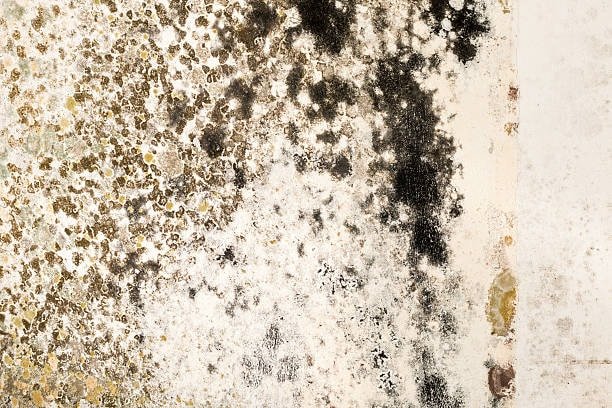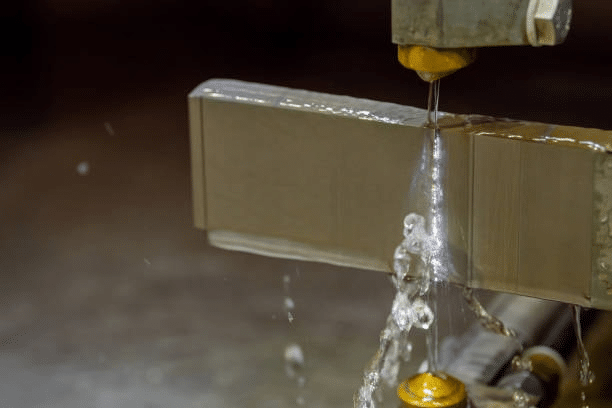Introduction
Molds operate as neglected natural artists since they generate intricate patterns in addition to complex patterns on various environmental surfaces. The fungal microorganisms develop distinct patterns while creating physical features which facilitate biological objectives while creating elegant growth displays. The textile patterns of mold fingerprints existing on food waste reveal information about environmental factors and biological evolution in addition to ecological interactions. This text analyzes mold tech and its diverse textures by investigating the processes of their generation along with their different forms and their scientific meaning and understanding of these fungal products.
The Science Behind Mold Texture Formation
The development of mold textures occurs through biological procedures which initiate at molecular dimensions. The appropriate environmental conditions such as warm temperature and moist areas with food sources lead mold spores to begin their growth through hyphal formation in the molding process . The mold surface textures and hyphae spread outward into extensive networks that serve as bases to develop future visible mold clusters.

Different mold occurrences develop distinctive textures and texture depth because of their different hyphal formations together with their reproduction mechanisms and their response to environmental conditions, resulting in complex textures . Two different types of mold growth occur: tightly compacted hyphae create velvety and powdery surface textures but loosely structured hyphae produce a fluffy cotton-like appearance. The reproductive structures together with spore-bearing bodies affect texture differences, especially when considering rougher finishes, as some species expand their reproductive bodies into tall stalks while others create flat spreading patterns.
The texture characteristics of microorganisms develop strongly under the influence of environmental conditions. Changes in humidity together with temperature and exposure to light and rough surface finish nutrients availability steer mold colonies into forming their unique textures. Changes in environmental factors make molds modify their growth patterns because they can generate varying textures from one species to another.
Common Mold Texture Classifications

Powdery Textures
The characteristic feature of powdery mold growth is small granules that meet surface finish standards and contribute to achieving a smooth finish, distributing as dust over surfaces. Small circular mold colonies start tiny before they grow outward in spreading rings. The microscopic structures effortlessly spread reproductive spores into tiny airborne vapors during any disturbance. Two examples of powdery mildews infect plant life while Aspergillus species typically colonize food that needs storage.
Velvety Textures
The velvety mold surface looks like short dense hair which replicates the leather textures of velvet fabrics. The compact arrangement of conidiophores produces an upright pattern at uniform heights which leads to this particular texture. The mold species Penicillium creates this unique texture through polishing which creates smooth-looking surfaces that reveal a fine surface detail when observed closely.
Cottony or Fluffy Textures
The cottony or fluffy mold textures develop cloud-like formations which people tend to recognize the most. Such textures emerge from hyphal structures which spread across the substrate surface as loosely arranged elongated filaments. The common bread mold species known as Rhizopus displays dramatic white to gray growth development in relation to plastic parts by producing this particular texture type.
Slimy Textures
The specific mold development of slimy textures occurs most frequently in water-rich environments along with nutrient-rich substrates. The wet appearance of these mold colonies, which can be categorized under various mold tech textures, proves that bacteria exist alongside mold strains or demonstrates mold species capable of thriving in intensely humid environments.
Color and Texture Relationships

The texture of mold growth relates to particular colors throughout the colony which helps experts identify mold species. Numerous elements create the link between color and mold material texture manifestation in mold colonies.
Toxigenic molds show particular color pigment release patterns because maturing spores appear differently than their original developing state. Textural changes in mold colonies cause related color transformations to occur across their life cycle.
Multiple environmental stressors will impact both mold texture and color at the same time. When molds encounter challenges from nutritional stress or temperature imbalances they create changes in their pigmentation and texture pattern as survival strategies.
Both texture and color attributes of mold growth are affected by the surface where the fungi develop. The same mold species adapts to its injection molded specific environment through alterations in textural and color expression when it grows on different food sources or building materials or natural substrates.
Ecological Significance of Mold Textures
The mold texturing process plays a crucial role in maintaining ecosystem function along with the appearance-related benefits of mold textures. Different mold tech textures and species arrange their structures in ways that create matching environmental survival techniques and ecological interactions:
The specific surface area design made by mold texture elements determines moisture retention power through its ability to trap water more effectively than flat layouts. Molds possess this survival adaptation which enables them to inhabit environmental areas with changing humidity patterns.
The way mold disperses spores heavily depends on how rough or smooth the mold structures are. Molds which present a fine dust-like structure depend on their delicate structure to trigger spores into open air currents yet slimy textures assist mold spores to cling to insects or animals for transferring between locations.
Microbial competition against other organisms benefits from certain texture attributes that lead to competitive advantage. The physical texture of certain mold species develops barriers which defend against other microorganisms and the structural arrangement of other mold types optimizes their ability to extract nutrients from their substrates.
Mold Textures in Human Environments

Household Mold Textures
Mold textures in human settlements serve as important indicators to determine both mold species types together with their possible health risks. The indentification of common household molds becomes possible through different bathroom surface textures as well as wall and basement patterns.
Black velvety mold growth signifies the presence of Stachybotrys chartarum (black mold) mainly when it develops on cellulose based materials such as drywall or wood. The mold develops a darkened texture which stands slightly elevated from the surface and usually follows moisture distribution patterns on building materials.
In the beginning stages of mold colony development different kinds of fungi create white and powdery growth patterns which will later develop specific visual characteristics. Molds establish themselves mostly inside the borders of grout lines together with window frames where dampness supports fungus development.
The spreading fuzzy growth patterns with different colors usually represent Aspergillus or Penicillium species that take residence on domestic surfaces primarily in kitchens and refrigerators and food storage spaces.
Food-Related Mold Textures
Different textures on food products indicate whether the mold presents beneficial food cultures or dangerous contaminants.
The production of flavor in cheeses through natural microbiological culture and surface treatment involves intentional introduction of microorganisms Penicillium camemberti which create white bloomy textures on cheese rinds.
Green or blue veined cheese such as Roquefort and Stilton develop their characteristic textures due to the purposeful inoculation with Penicillium roqueforti which produces both flavorful outcomes and visual effects.
Nonspecific or tacky textures on food products signal spoilage molds have taken advantage of the food opportunity which could yield harmful mycotoxins leading to unsafe food ingestion.
Artistic and Cultural Perspectives on Mold Textures

Mold textures have found creative inspiration in the manufacturing, cultural and artistic worlds throughout human civilization mold cavity. Modern artists embrace mold in the plastics industry as their artistic medium to photographically and sculpturally portray evolving textures and carry out guided mold cultivation experiments which record evolving colony patterns grit sanding stones.
Different mold patterns have functioned as traditional signs for predicting meteorological conditions while helping maintain food quality in traditional beliefs. Historically many cultures linked particular mold contours to environmental readings and food security checks even though fungal understanding remained unknown prior to scientific discovery flat surfaces.
Several architectural and textile designs alongside visual art creation have incorporated mold textures for their appealing visual characteristics spark erosion. Research on mold colony patterns and color gradients and structural formations has led to sustainable design practices which duplicate natural organic growth principles laser texturing.
Scientific Applications of Mold Texture Analysis

Scientific research in modern times has established complex mold texture analysis techniques for obtaining practical results sink marks.
Automated identification systems integrate mold species textures among their essential determining factors during their taxonomy procedures rotary tool. Modern machine learning algorithms identify closely connected mold species through their subtle varied colonial structures which humans would not easily detect protective tape.
Pathogenic fungi get rapid identification through the application of colony texture analysis during medical diagnostic testing pattern appears matte finish. Identifying particular medically important molds through their characteristic growth patterns permits faster diagnosis and treatment execution when healthcare professionals recognize these patterns correctly glass beads.

Food safety protocols use texture assessment and draft angles long side other methods to identify molds during their complete identification procedures abrasive blasting. Food production facilities use visual inspection guidelines to perform quality control functions which focus on spotting problematic texture variations, especially when considering larger draft angles as indicators of dangerous contaminations in the manufacturing process.
Conclusion
Molds create an interesting scientific space where biological and ecological interactions meet through visual observation. Millions of years have shaped mold’s adaptive strategies which become visible at both grit stone microscopic hyphal network scales and observable macroscopic scales linear scratches parting lines. The vital biological role of mold textures produces aesthetically pleasing features which have drawn human interest between scientific inquiry and cultural societies and artistic realms throughout history tooling marks.
Education about mold textures allows us to understand fungal organism complexity together with practical applications to determine environmental beneficial and detrimental species. Our knowledge enhances as scientific groups investigate both heritable and non-inherited elements that guide mold texture creation among various environmental niches worldwide.


